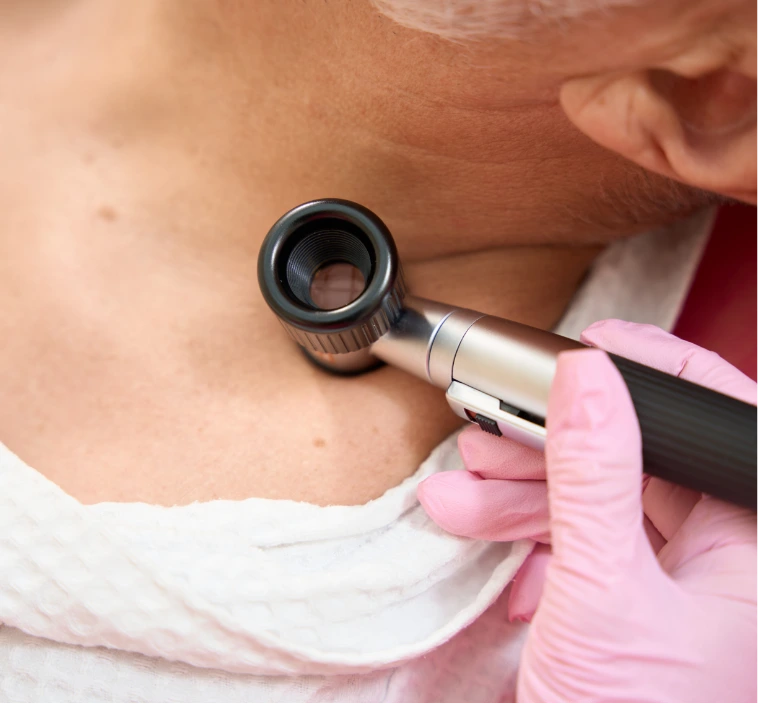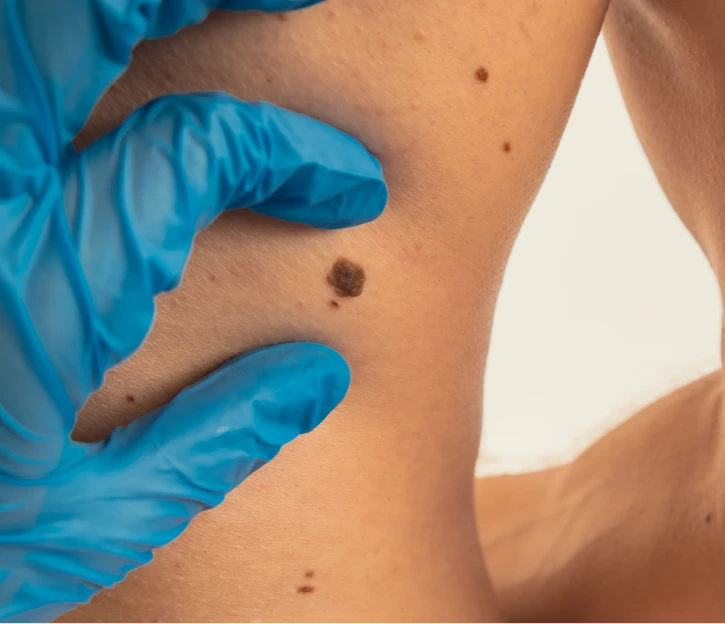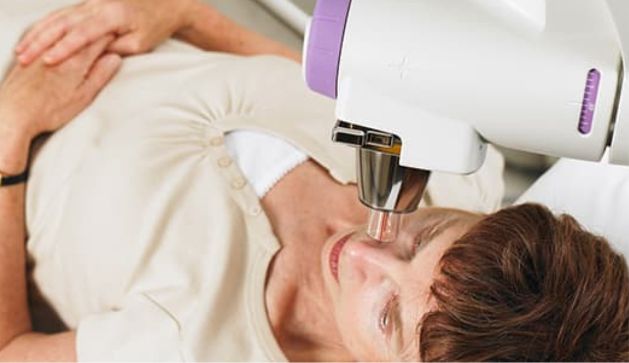Skin Cancer Resources
Our skin cancer resources help you understand your diagnosis, recognize the signs of skin cancer, and better care for your skin and your health.

What Skin Cancer Is and Why Early Detection Matters
Your skin is the largest organ in your body and it protects you from injury, infection, and the sun’s damaging rays. Skin cancer begins when skin cells grow in an uncontrolled way and form abnormal tissue. This abnormal tissue can be benign (non-cancerous) or cancerous. With early detection and the right treatment, most skin cancers are highly curable.
The three most common types of skin cancer are:
Basal cell carcinoma (BCC): The most common form; slow-growing and can cause damage if left untreated.
Squamous cell carcinoma (SCC): The second most common form; grows faster than BCC and can cause damage if left untreated.
Melanoma: Less common but more aggressive; can spread quickly and become life-threatening if left untreated.
Know the Signs of Skin Cancer
Skin cancer can look different for everyone, and not every spot, mole, or lump is cancer. But there are common changes to watch for:
A sore that doesn’t heal or keeps returning
A scar-like area that feels firm
A flat, scaly patch that may be pink, red, or brown
Rough, crusty patches that may bleed if bumped
A mole that changes in size, shape, or color
A shiny, pearly, or waxy bump
Precancerous conditions, such as actinic keratosis, can also signal risk. These are rough, sun-damaged patches that can turn into squamous cell carcinoma if left untreated. If you notice a new or changing spot, give us a call at 253-750-5613 to have it checked.

How to Perform a Self-Check
A thorough self-exam requires the following simple supplies: a bright light, a full-length mirror, a hand mirror, and a brush or comb. When checking your skin, keep a lookout for new spots or growths, moles that change in size, shape, or color, sores that don’t heal, or rough scaly patches.
Start With Your Face
Look closely at your forehead, nose, lips, mouth, and ears (front and back). Use a mirror, or two, to make sure you see every angle.
Look Over Your Scalp
Part your hair in sections and use a brush or comb along with a hand mirror to see your scalp. If possible, ask someone to help check spots you can’t see well.
Examine Your Hands and Wrists
Check both sides of your hands, including between your fingers, under your nails, and along your wrists.
Review Your Arms
From your forearms up to your shoulders, check all sides, including your underarms and armpits.
Check Your Front and Sides
Using a full‑length mirror, look over your neck, chest, stomach, and sides.
Inspect Your Back and Shoulders
With your back to the full-length mirror, use a hand mirror to view your shoulders, upper back, and the backs of your arms.
Check Your Lower Back and Buttocks
With both mirrors, examine your lower back, buttocks, and the backs of your thighs.
Look Over Your Legs and Feet
While seated, examine the front, back, and sides of each leg, plus your ankles, tops and bottoms of your feet, between your toes, and under your toenails.
Understanding Basal Cell Carcinoma (BCC)
Basal cell carcinoma is the most frequently diagnosed form of skin cancer and often shows up as a small bump, red patch, or sore that won’t heal. It rarely spreads but can grow deeper if ignored.
Understanding Squamous Cell Carcinoma (SCC)
Squamous cell carcinoma is the second most common type of skin cancer and can develop from prolonged sun exposure or precancerous lesions. It grows faster than BCC and may spread if untreated.

Treating Skin Cancer Without Surgery

Surface-level radiation therapy that precisely targets skin cancer cells.
Targets skin cancer cells without surgery, stitches, or recovery time.
Quick, effective treatments that allow you to get back to your life.



